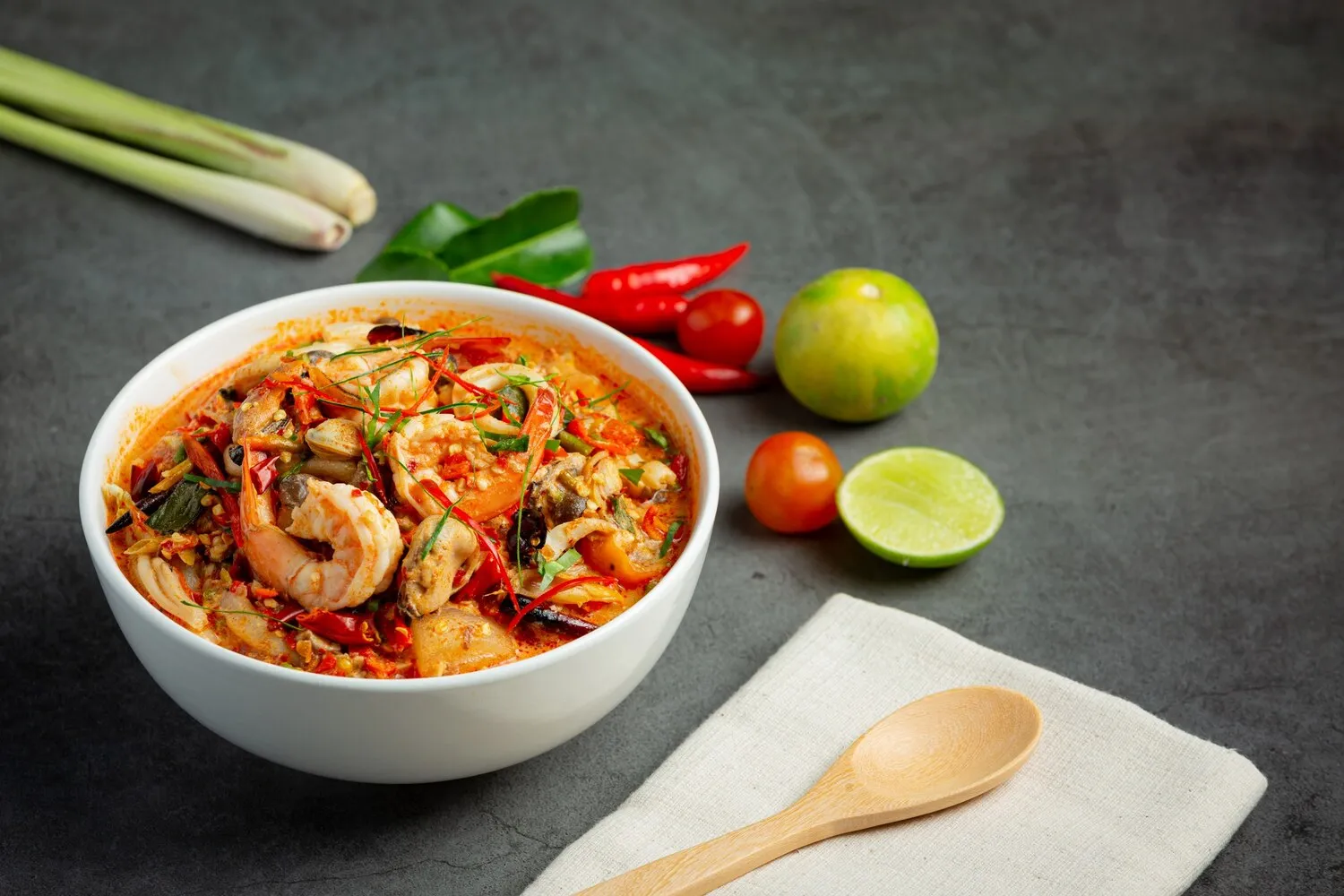
Khao Poon
A popular dish, red curry noodle soup.
Nutrition Facts
* The % Daily Value (DV) tells you how much a nutrient in a serving of food contributes to a daily diet. 2,000 calories a day is used for general nutrition advice.
Gai Noi
Khao Poon's origins are deeply rooted in Laotian culinary history, influenced by centuries of trade and agricultural practices within Southeast Asia. The dish likely evolved from simpler noodle soups using readily available ingredients, gradually incorporating the complex flavors and techniques that define it today. Specific details on its precise historical evolution are often passed down through oral tradition rather than formal written records, but it reflects the resourcefulness and adaptability of Laotian cuisine.
Khao Poon holds a significant place in Laotian culture, often served during special occasions, family gatherings, and religious ceremonies. It represents hospitality, community, and the importance of sharing food with loved ones. The dish is more than just sustenance; it is a symbol of Laotian identity and culinary heritage.
Festive Occasions
Khao Poon is frequently prepared for celebrations such as Boun Pi Mai (Lao New Year) and other important religious festivals. Sharing a bowl of Khao Poon signifies good fortune and blessings for the year ahead.
Family Gatherings
Large pots of Khao Poon are a common sight at family gatherings. Preparing and enjoying the dish together strengthens family bonds and reinforces cultural traditions.
Community Events
Khao Poon is often served at community events, such as temple fairs and village celebrations, fostering a sense of unity and shared identity among participants.
Khao Poon is characterized by a rich, aromatic, and slightly spicy red curry base. The flavors are a complex balance of creamy coconut milk, pungent fermented fish sauce (padaek), spicy chilies, and fragrant herbs like lemongrass, galangal, and kaffir lime leaves.
The red curry paste is a key component, typically made from dried chilies, garlic, shallots, galangal, lemongrass, kaffir lime zest, and sometimes shrimp paste. Coconut milk provides richness and sweetness, while padaek adds a unique umami depth. The dish also features fresh herbs such as cilantro, mint, and basil, and often includes lime juice for brightness. Ground pork, chicken, or fish are common protein additions. The thin, rice vermicelli noodles provide a neutral base for absorbing the flavorful broth.
Padaek Usage
Padaek (Lao fermented fish sauce) is a powerful ingredient. Start with a small amount and adjust to taste. It adds a unique depth of flavor, but too much can be overpowering. If you cannot find or do not want to use Padaek, Fish sauce can be used as a substitute, but it will not be quite the same.
Herb Freshness
Use fresh herbs liberally. The combination of cilantro, mint, and basil adds a refreshing element to the rich curry. Add them just before serving to preserve their flavor and aroma.
Noodle Preparation
Don't overcook the rice vermicelli noodles. They should be tender but not mushy. Cook them according to package directions and rinse with cold water to stop the cooking process.
Spice Adjustment
Adjust the spice level to your preference. Add more chilies or chili paste for a spicier dish, or reduce the amount for a milder flavor. Remember you can always add more spice, but it's harder to take it away.
Explore additional Soup dishes and restaurants
Explore SoupDiscover top dining spots and culinary experiences in Minneapolis.
Explore MinneapolisLearn more about the food culture, restaurant scene, and culinary heritage of United States.
Explore United States